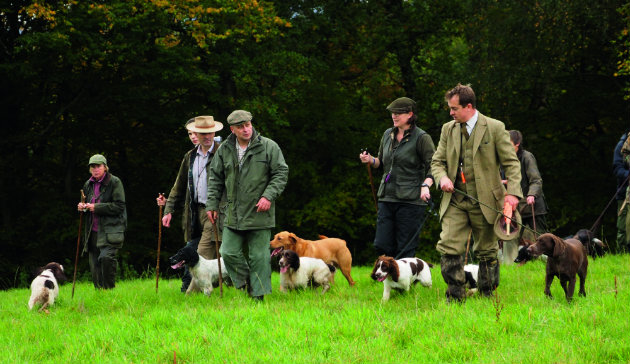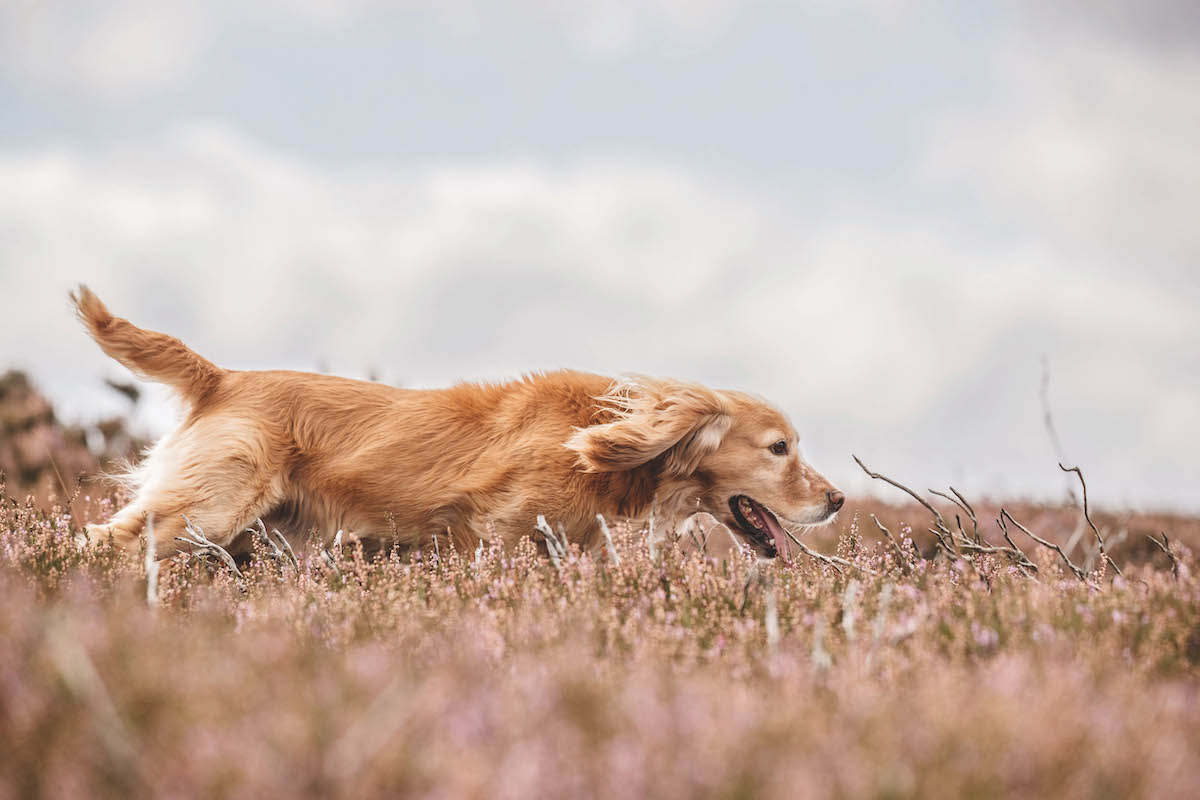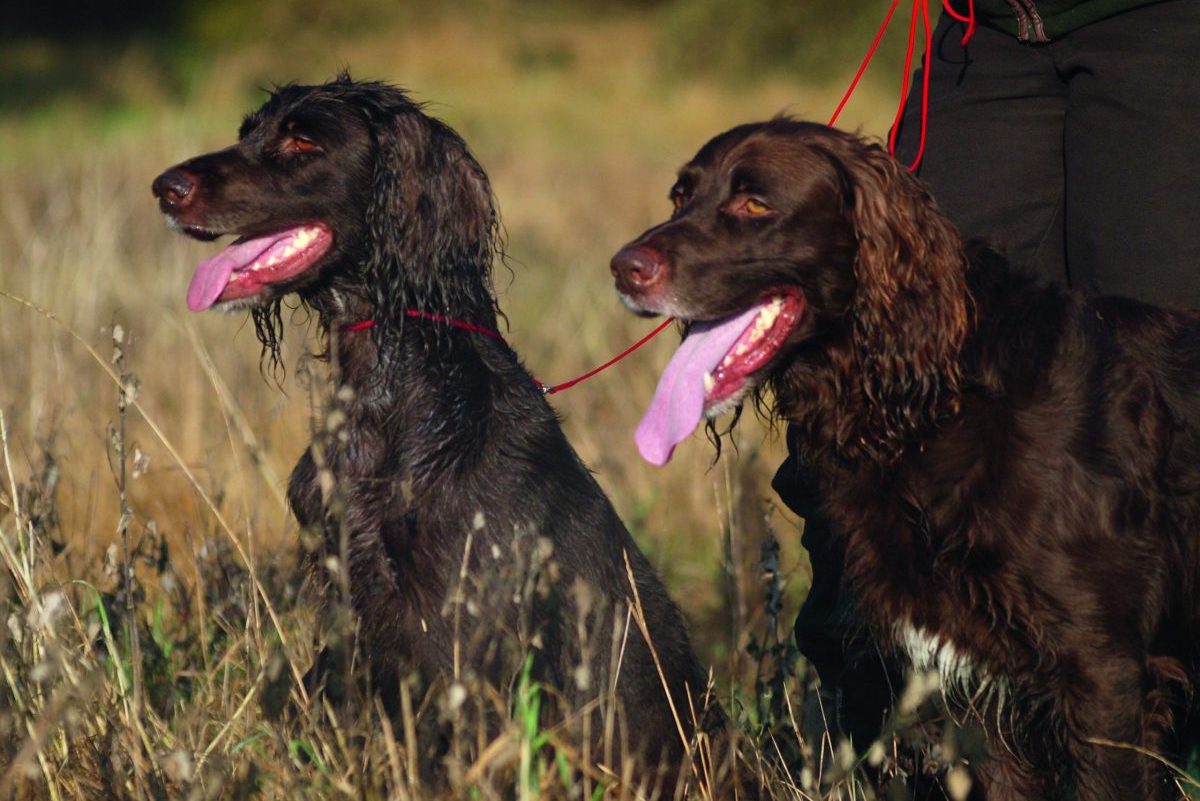Why beaters’ dogs have it best
Beaters's dogs are vital to the success of a shoot day and are often the unsung heroes of the field. But they also have the most fun ...

Half a century of observing the British shooting field has led me to the conclusion that on a typical driven shoot, the people who have the most fun are the beaters. The pickers-up enjoy themselves, too, but their job comes with a great deal of responsibility. The Guns all pretend they are enjoying themselves, but they have the constant concerns of missing good birds, and getting frustrated when the pheasants fly over everybody else’s peg rather than theirs. What’s more, they are almost certainly paying for the privilege of shooting, while the beaters are being paid.
The frustrations of the Guns’ dogs vs beaters’ dogs
Similar comments can also be made about the canine participants in a shooting day. A beating dog has a great deal of freedom to hunt and have a good time, while the picking-up dog has a great day, too, even though there are occasions when it is forced to watch rather than get involved with the action. As for the Guns’ dogs, well, for most of the day they have to sit by their owner’s peg, and they have to endure the frustration of seeing other dogs retrieve their master’s (or mistress’s) birds.
On many shoots the beaters’ dogs are vital to the success of the day, yet they remain the unsung heroes of the shooting field, the dogs that everyone takes for granted. None of them have fancy letters such as FTCh in front of their name, and few of them have fancy names, either. The elite world of field trials is of no concern to their handlers, while even the best beating dogs never sell for four-figure sums. And while there are dozens of books teaching you how to train your spaniel or retriever to be a responsive shooting dog, almost all concentrate on retrieving as the ultimate goal.

Border collies often make great beating dogs, as they generally work diligently close to their handlers
The best-trained dogs
Ironically, retrieving is the last thing you want your beating dog to do. Once a dog learns to associate bangs with retrieves there’s a greater risk of it becoming unsteady, and even committing the cardinal sin of leaving the beating line to do a spot of picking-up. There can be few of us who haven’t witnessed a beating dog nipping smartly out of a wood or cover while a drive is under way to snaffle up
a bird and take it back to its handler. Even what may seem the best-trained dogs are guilty of such behaviour. I remember a drive where the gamekeeper’s usually impeccable dog left the line to go and do some unbidden retrieving, a reflection perhaps that the keeper had his work cut out controlling the line, and wasn’t best placed to control his dog, too.
I once did some unpaid picking-up on a small driven shoot where I was keen to get some retrieves for my young spaniel. The beaters were notorious for their wild dogs, and at the end of each drive a mix of unruly Labradors and spaniels would appear, without a handler in sight, and then retrieve all the birds they could find. It was very frustrating.
A cardinal sin
The basic requirements for a beater’s dog are simple: an enthusiasm for hunting close to the line, an instant response to the whistle and a reliable recall. Boldness when hunting in thick cover is a great asset, while the beating dog’s cardinal sin is pegging unshot birds. Some dogs gain great proficiency at pegging and it’s hard to cure, other than by muzzling them. I’ve been on shoots where the beaters’ dogs have pegged a considerable percentage of the bag, and I’ve heard of another where the Guns refused to pay the final bill because they claimed that many of the birds that ended up on the game cart had never been shot. I suspect that they were right.
Though the great majority of beating dogs are spaniels or retrievers, HPRs can be very effective in the beating line, especially on shoots where birds aren’t too numerous. Most pointers get used to pointing birds, only for a bustling spaniel to come along and flush it. What you don’t want is a pointer that comes on point and gets left behind, so is nowhere to be seen at the end of the drive.
Non-gundog breeds
A wide variety of non-gundog breeds also do sterling work in the beating line. Border collies are among the best, as they generally work diligently close to their handler, have no interest in retrieving and rarely peg birds. Beating terriers are great for getting under the brambles, but some become skilled at pegging, often killing the bird and leaving it where they found it. I was once beating with my spaniels on a shoot where one of my dogs retrieved a pheasant that had been partly shredded by a Jack Russell. Worried that someone might think my dog had done the damage, I buried the bird in a convenient rabbit hole.

Despite worries about steadiness, beating while attached to a dog is never satisfactory
Worries about steadiness ensure that many dogs are never let off their leads, but beating while attached to your dog is never satisfactory, as you often get in a tangle. I’ve done my fair share of beating with a dog on a lead. There was one time, on a serious driven shoot, where my spaniel behaved impeccably all day. I was tempted to let her off on the last drive: fortunately I didn’t, as the keeper had saved his best drive till last, and there were so many birds the poor dog nearly went crazy.








